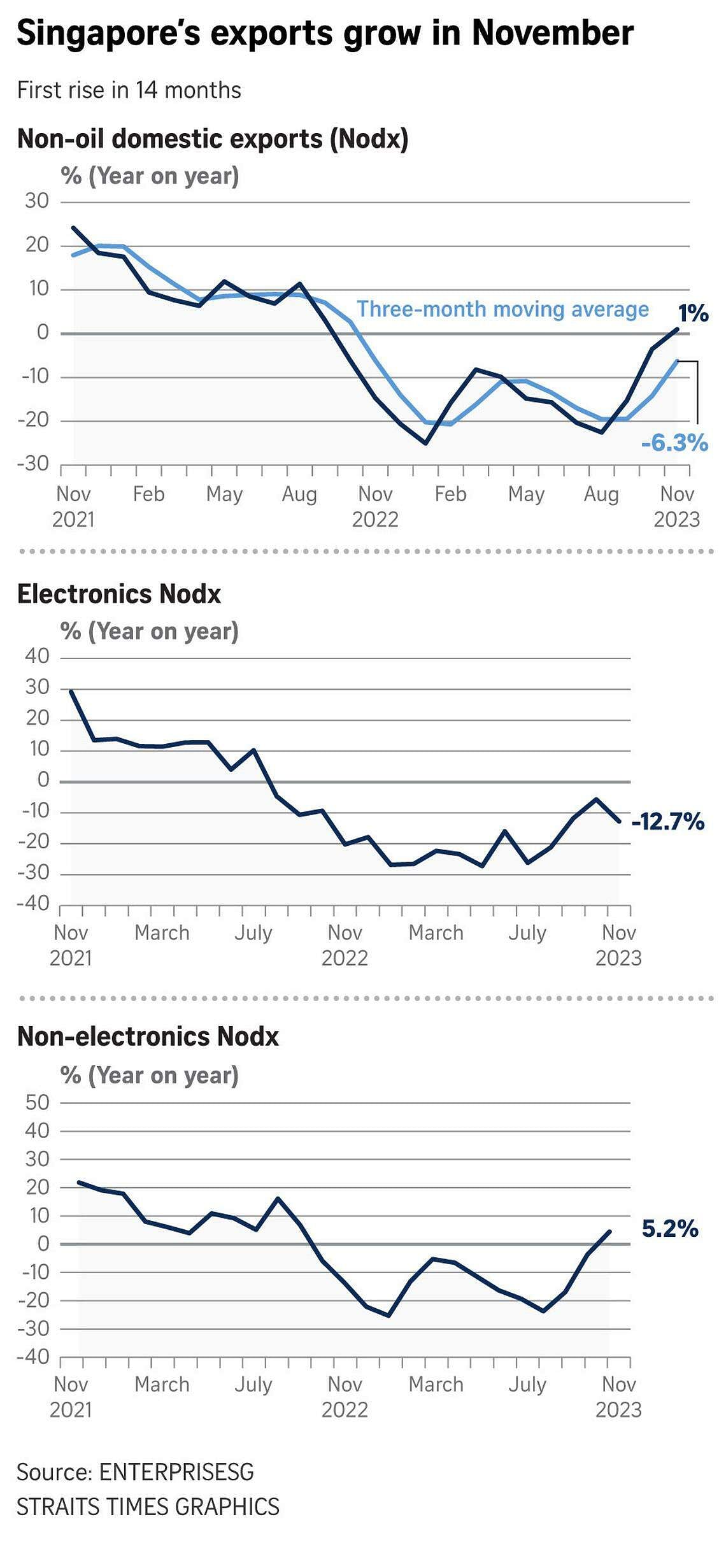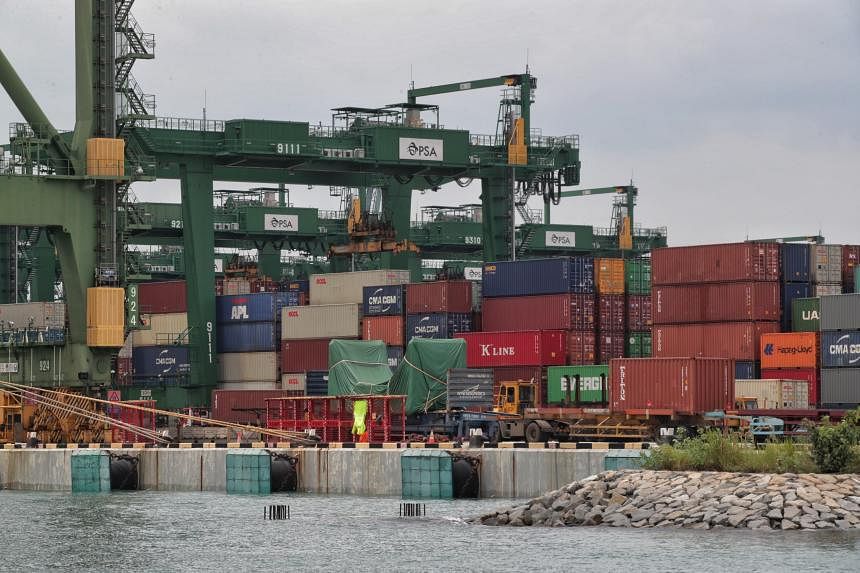SINGAPORE – Singapore’s key exports returned to growth for the first time in more than a year, although electronics remained in the red and the recovery was fragile.
Non-oil domestic exports (Nodx) in November rose 1 per cent from a low base a year ago, snapping 13 straight months of decline, data from Enterprise Singapore (EnterpriseSG) showed on Dec 18. The turnaround came after a revised 3.5 per cent fall in October.
The November reading was slightly short of Bloomberg’s consensus forecast for 1.5 per cent growth.
Economists said that while the upturn in November’s Nodx numbers was encouraging, any further recovery will be tentative and gradual as elevated interest rates continue to weigh on major global economies and China remains in the doldrums.
The weak performance of electronics exports remains a concern as well. In November, electronics Nodx continued to shrink as non-electronics shipments drove the rebound in Nodx.
Non-electronics exports grew 5.2 per cent in November from a year ago, reversing the 2.9 per cent decline in October. Volatile pharmaceuticals and non-monetary gold contributed the most to the rise in non-electronics Nodx. Non-monetary gold refers to gold that is not held as reserve assets by the world’s central banks.
Both grew from a low base a year ago, with pharmaceuticals surging 118.9 per cent, while non-monetary gold rose 106.5 per cent.
Conversely, electronics exports shrank for the 16th straight month, falling 12.7 per cent year on year in November. The drop was worse than in October, when electronics shipments contracted 5.6 per cent.
Integrated circuits (ICs) or semiconductors, which formed about half of electronics Nodx, and personal computers (PCs) drove the falls in electronics shipments.
ICs contracted by 18 per cent in November from a year ago, but at a three-month moving average – to smooth out any volatility in the monthly data – the pace of decline was slower compared with October and September. Meanwhile, PCs, which made up nearly 10 per cent of Nodx, slipped 47.8 per cent from a high base a year ago.
Mr Alex Holmes, lead Asia economist at Oxford Economics, said the global semiconductor cycle has already bottomed out and turned upwards. However, any recovery in demand for electronic products will be “slow and bumpy”.
“Producers of electronic products still have big inventories, curtailing investment. Exports of specialised machinery – which include semiconductor manufacturing equipment – (also) remain weak”.
DBS economist Chua Han Teng noted that there is an improving trend in electronics Nodx on a three-month moving average basis, where the decline narrowed to 10 per cent in November from a year ago. That is the best performance in nearly a year for electronics shipments, he said.
OCBC chief economist Selena Ling said a recovery in personal computer and 5G smartphone demand will be key for the electronics industry to bounce back after an extended downcycle.
Shipments to Singapore’s top 10 markets declined as a whole in November, led by falls in exports to Taiwan, the European Union, Indonesia and South Korea.

Shipments to the United States reversed the previous month’s decline to grow 20.5 per cent year on year in November, while exports to China continued to rebound, rising 13.7 per cent.
Compared with a month earlier, Nodx grew by a smaller 0.3 per cent in November to $15 billion, after a revised 5.7 per cent jump in October.
Mr Chua said Nodx has contracted by 13.9 per cent in the first 11 months of 2023, compared with the same period a year ago.
For the full year, DBS expects Nodx to settle at the weaker end of EnterpriseSG’s forecast of a decline of 12 per cent to 12.5 per cent.
Economists said there are risks that could derail the recovery in exports in 2024.
Mr Holmes said global growth appears to be waning as “the adverse impact of past policy tightening builds up”.
He added that against this backdrop of slower growth, “the global trade on which Singapore depends is unlikely to expand at a fast pace”.
“We are likely to see year-on-year growth of Nodx generally remain in positive territory going forward, but it is unlikely to be strong or provide a big boost to (Singapore’s) economy,” Mr Holmes said.
Mr Shivaan Tandon, emerging Asia economist at Capital Economics, said the uncertainty over the outlook for demand and the weak business sentiment overseas will weigh on Singapore’s trade-reliant economy.
DBS’ Mr Chua cited other red flags ranging from a sluggish recovery in China to lingering geopolitical tensions that could still disrupt supply chains.
But amid the risks, forward-looking indicators signal better days ahead for overseas shipments, he added.
For instance, new export orders in the manufacturing purchasing managers index have improved for the sixth straight month in November, staying above the 50 mark that indicates expansion.
EnterpriseSG in November predicted a modest recovery in 2024, with Nodx expected to rise by 2 per cent to 4 per cent as global electronics demand recovers.


